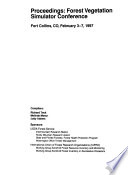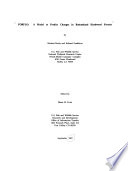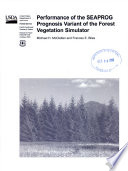Wildfire Assessment Using FARSITE Fire Modeling: A Case Study in the Chihuahua Desert of Mexico
View
@ Florida International Unviersity
Brakeall, John
Description
The Chihuahua desert is one of the most biologically diverse ecosystems in the world, but suffers serious degradation because of changes in fire regimes resulting in large catastrophic fires. My study was conducted in the Sierra La Mojonera (SLM) natural protected area in Mexico. The purpose of this study was to implement the use of FARSITE fire modeling as a fire management tool to develop an integrated fire management plan at SLM. Firebreaks proved to detain 100% of wildfire outbreaks. The rosetophilous scrub experienced the fastest rate of fire spread and lowland creosote bush scrub experienced the slowest rate of fire spread. March experienced the fastest rate of fire spread, while September experienced the slowest rate of fire spread. The results of my study provide a tool for wildfire management through the use geospatial technologies and, in particular, FARSITE fire modeling in SLM and Mexico.
Jeffrey OnstedAssefa MelesseKeqi Zhang
















